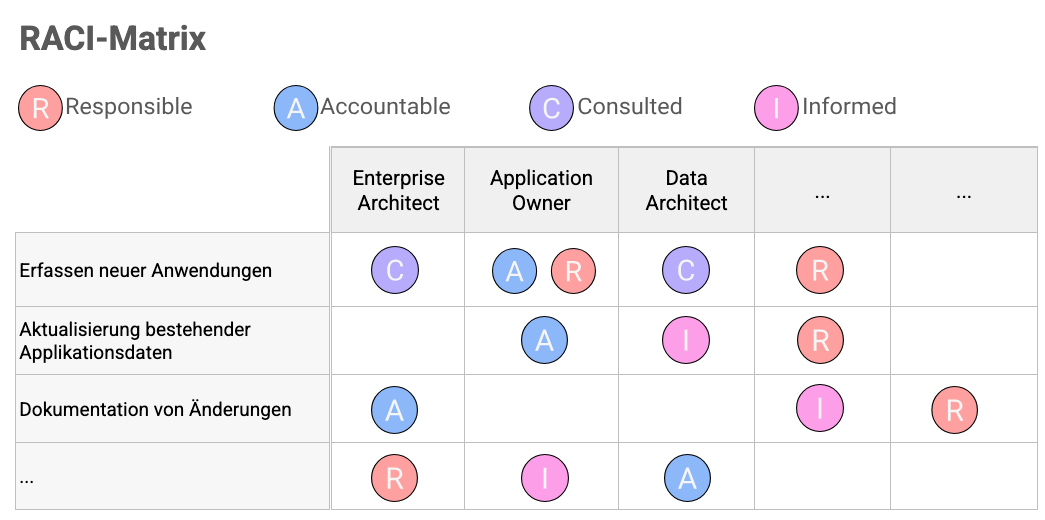Maintenance process
Why a clear maintenance process for enterprise architecture is crucial
Enterprise architecture management only delivers value if it has an enterprise architecture repository as a reliable basis for decision-making. Without clear responsibilities and a maintenance process for architecture artefacts, information becomes outdated, documentation loses its reliability and stakeholder confidence declines. At the same time, uncertainty arises as to who is actually responsible for what. In large corporate landscapes in particular, this quickly leads to duplication of work, gaps or contradictory information and ultimately to poorer decisions.
A defined maintenance process prevents precisely these risks. It ensures that artefacts such as data, applications, processes or interfaces remain complete, correct and up to date. Standardised procedures and clear responsibilities prevent blind spots, redundancies and inconsistencies. This ensures that the architecture documentation remains a reliable source of information within the company and creates the necessary trust.
Numerous roles and stakeholders are involved in maintaining the documentation. While some actively work on changes and the initial assessment of the enterprise architecture, others need to be informed about the status and results.
Typical challenges in the maintenance process
However, this can quickly lead to problems, especially in corporate environments where many departments and stakeholders are involved:
- Who is responsible for which task?
- As the person responsible, do I also have to carry out this task myself?
- Where can I get the necessary information?
- Who do I need to inform about certain changes?
Keeping track of roles and responsibilities
A defined maintenance process coordinates the activities of the various roles and ensures that responsibilities are clearly defined. A proven method for presenting these roles and tasks transparently is the RACI matrix.
 Illustration: An example of what a RACI matrix might look like.
Illustration: An example of what a RACI matrix might look like.
It specifies exactly who is responsible for each task, who has overall responsibility, who must be consulted and who must be informed.
A RACI matrix makes the maintenance process transparent, efficient and binding, even in complex architecture landscapes.
A structured maintenance process is not only defined once, but also actively implemented. This creates a continuous process that does not end with the initial assessment of the enterprise architecture, but is continued. This ensures that the architecture remains up to date and reliable in the long term.
Contact us and we will work with you to develop a clear maintenance process for your enterprise architecture.

Kai Herings
Senior consultant
Optimize alignment between IT and business with expert advice and clear strategies.
